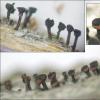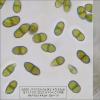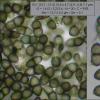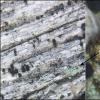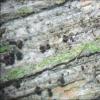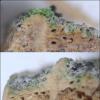
10-01-2026 01:18
 Danny Newman
Danny Newman
cf. Neovaginatispora fuckelii on indet. shrub Pre

07-01-2026 10:24
 Danny Newman
Danny Newman
Pezicula sp. on indet. hardwood Appalachian Highl

09-01-2026 17:41
Arnold BüschlenHallo, F. dilatata wird von vielen Bryoparasiten

09-01-2026 10:08
 Blasco Rafael
Blasco Rafael
Hola, en el mismo habitat que la anteriorRetamaDia

08-01-2026 21:22
 Blasco Rafael
Blasco Rafael
Hola, He recogido esta muestra de Orbilia sobre Re

07-01-2026 22:22
 Danny Newman
Danny Newman
Tatraea sp. on indet. hardwood The Swag, Great Sm

07-01-2026 17:29
 Marc Detollenaere
Marc Detollenaere
Dear Forum,On a barkless Populus I found some smal

10-11-2021 17:33
 Riet van Oosten
Riet van Oosten
Add-on topic http://www.ascofrance.com/forum/7059

07-01-2026 10:05
 Danny Newman
Danny Newman
cf. Chaetospermum on XylariaCosby Campground, Grea
Found these apothecia growing on old wood of Quercus.
Size up to 1 mm high.
I have come to define the genre as Calicium, but it is difficult for me to determine the species. I think it can be C.salicinum, but I wish someone confirm or reject my hypothesis.
Thanks in advance, greetings.
Susana (Spain)
No problem or C. salicinum. Nice photos.
Alain
Greetings
Susana
Reviewing the notes of this collect I've noticed that there may be two species of Calicium mixed on the same substrate.
I came back to look at the microscope and I note that there are two types of spores:
1.-spores with spiral ornamentation belonging to the apothecia with brown capitulum and an average size of 8.1-9.1 x 4.2-4.7um, we determine as C.salicinum.
2 -. Larger spores (12.1-13.3 x 5.9-6.5um) with warty ornamentation and irregular cracks, belonging to the totally black apothecia (top left image macro).
These last apothecia could belong to C.abietinum?
Thank you, greetings
Susana
Amazing !
Ascospores are fissurate-areolate, >12 µm, yes it'sprobably C. abietinum. A very interesting collect !
I suppose that you haven't seen thallus ?
But you also should look towards C. denigratum. Compare the to descriptions to choose.
Alain
First, I have no experiencie in determining this type of fungus.
I looked again the sample.
In my first impression I believed that there was not thallus, I believed it was a very deteriorated surface (Figure 1, left).
Now, I see that appear areas with development of surface thallus (Figure 1, right).
When cut also seems confirmed the presence of surface thallus. One poorly developed thallus.
It would then be C.viride. In two different states of development: young apothecia (brown) and mature (black)?
what do you think?
Thanks
Susana
It's coming more difficult... often Caliciales are associated.
It's not sure that the green granular thallus is the one of the two caliciales (perhaps a third one or another lichen). Calicium viride has a green thallus sometimes granular, but some authors give a different spore's ornementation (I read it could be partially spiraled in C. viride, but sometimes it's said it could be with irregular cracks). Not easy.
Do you want keys for this genus ?
Alain
I used information found on the Internet:
- KEYS TO GENERA AND SPECIES OF Caliciales IN NORWAY (http://www.thavibu.com/caliciales/keyes.htm) and
- Http://lichenportal.org/portal/taxa/index.php?taxon=51834&taxauthid=1&proj=1 for descriptions.
If you have additional information, I would like to receive it.
Thank you very much, greetings
Susana
Hi Susanna,
A few days ago, I found the same lichenized fungus. I think it's Calicium glaucellum. But apothecia shloud be pruinose (white) . I will post photos in database.
Alain

